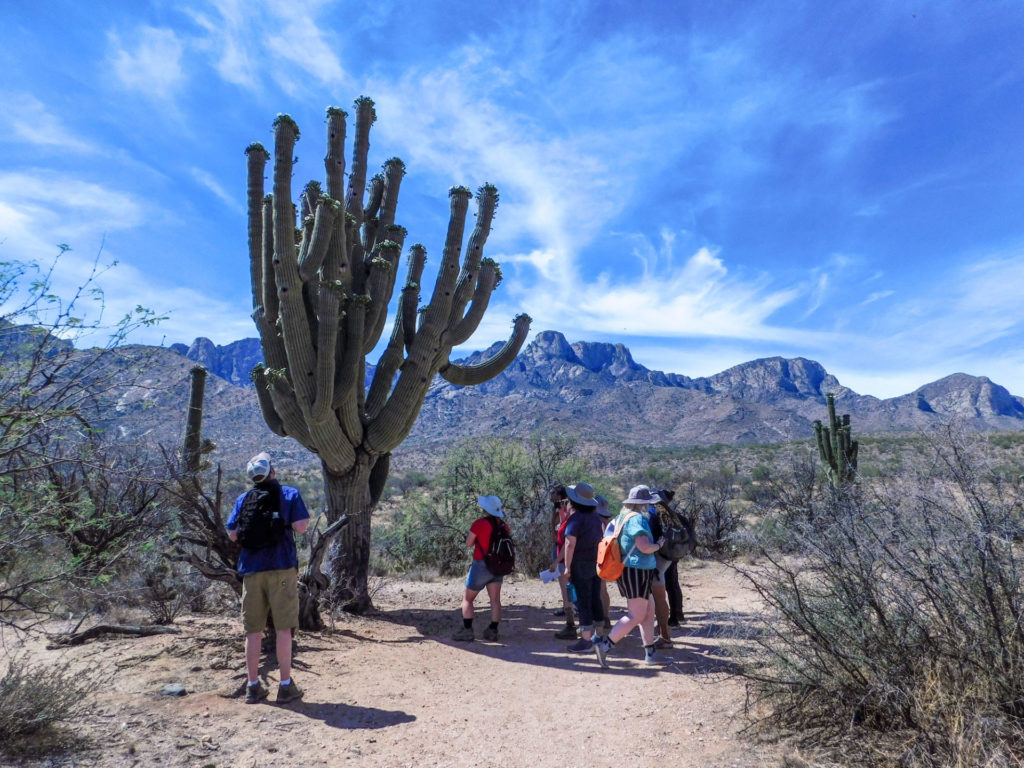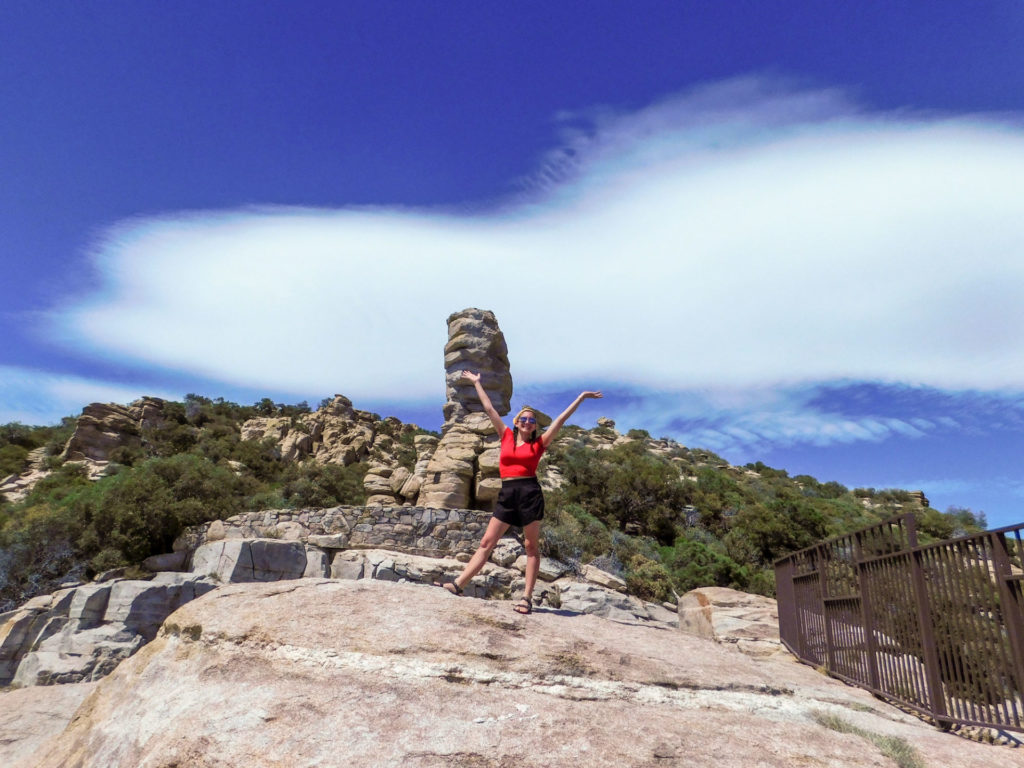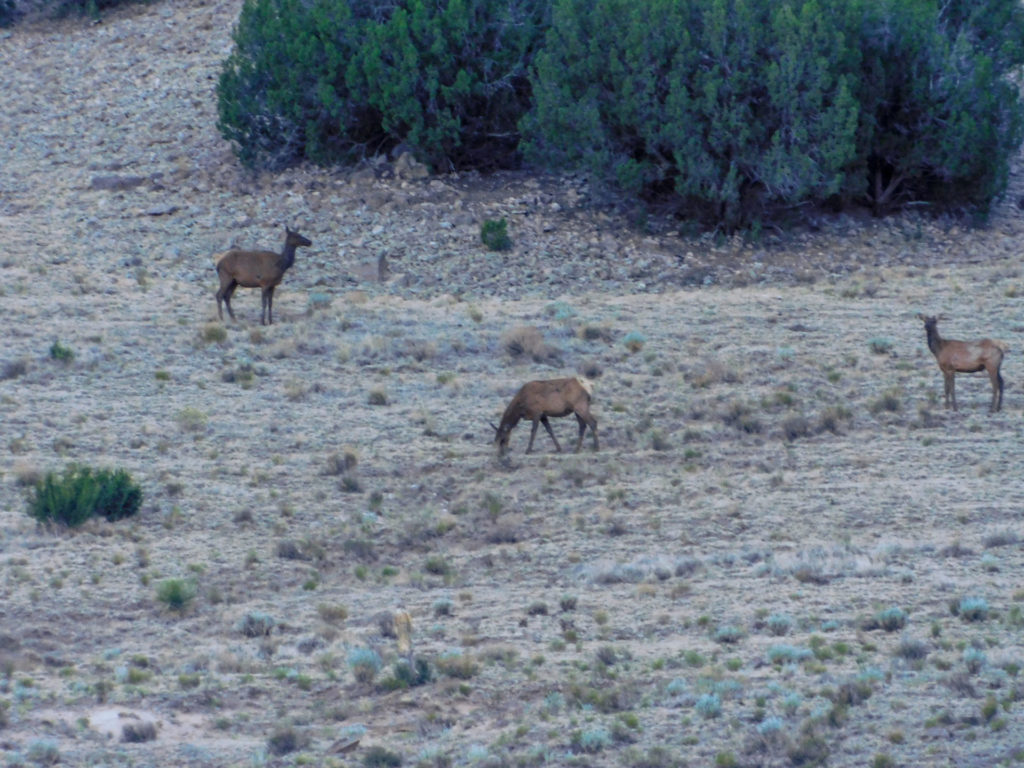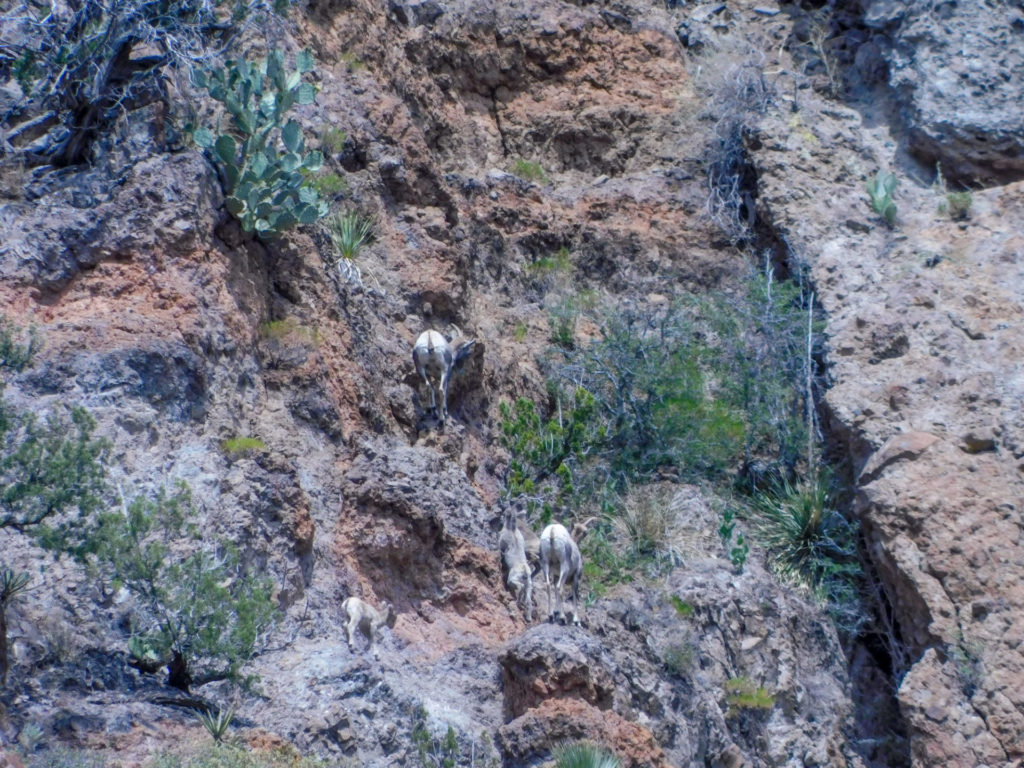- Home
- >
- Preservation Archaeology Blog
- >
- Diversity Across the Landscape
(June 15, 2021)—When I first came to the Southwest, I was expecting an arid landscape scattered with sparse, scraggly vegetation, and lots of sand. I was not expecting the high level of biodiversity that I have observed over recent weeks.
Immediately, as I stepped out of the air-conditioned interior of Tucson’s airport into the dry heat of the parking lot, I was met with the sight of a saguaro cactus almost twice my height. The staggering size of the cactus made me think it might be fake, as it rivaled even some of the trees back in my home state of Maine. But as we made our way to the University of Arizona campus, I was amazed to pass a wide variety of plant life, including cacti, shrubs, trees, and various grasses.

The day before we set out for Cliff, New Mexico, we took a driving tour up Mt. Lemmon. It was along that stretch of winding mountain road, as we passed through five different ecological zones, that I truly began to register the level of biodiversity that exists across the Southwest.

During our first week in Cliff, I participated in the Experimental Archaeology portion of the field school. I expanded my understanding of this region’s plant and animal life over those four days. I saw mule deer and elk for the first time in my life. Seeing a herd of wild elk was especially significant to me, as I grew up near an elk farm back home. It was incredible to see this animal in its natural habitat, rather than fenced in and eating out of the palms of human visitors.

On our third day, as we basked in the warmth of the San Francisco hot springs, we spotted a small herd of bighorn sheep crossing the cliff faces above. It was a spectacular sight to watch through my camera as the ewes led their lambs across the precarious ridges. Eventually they came to what they deemed the perfect spot to graze for a while and lie under a tree for the hottest hours of the afternoon.

As the field season progresses, I’ve found myself setting aside moments just for contemplation and reflection. I have spent a lot of time thinking about how the natural and cultural landscape are inherently connected to one another and influence each other in equally powerful ways. I hope the experiences I gain from working in a landscape so different from what I am used to help open my eyes to the symbiotic relationship that exists between my home environment and local communities back in Maine. Sometimes, it seems like you need to completely change your perspective in order to truly understand the world around you.
One thought on “Diversity Across the Landscape”
Comments are closed.
Explore the News
-
Join Today
Keep up with the latest discoveries in southwestern archaeology. Join today, and receive Archaeology Southwest Magazine, among other member benefits.
You write very well.